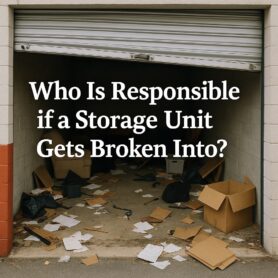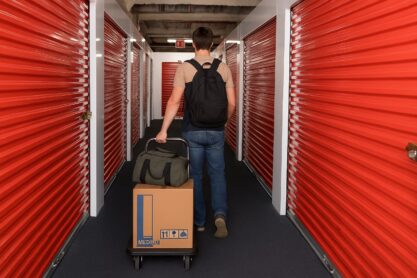We all know that after the indulgence of the festive period comes a spell of analysis and contemplation. Usually, this means signing up to a gym and vowing never to scoff Celebrations for breakfast ever again, but not every resolution is related to shifting excess Christmas pounds. For some, making resolutions is all about managing and reducing stress, making life easier, and getting more enjoyment out of your home, your family, your job, and your friends. If you’re drowning in Christmas clutter, there’s no better place to start than promising to keep track of tidying and cleaning and taking a vow to stop hoarding. If you’re keen to declutter in 2019, here’s a helpful guide to set you on the right track.
How to declutter your home
We’ve all been there. On a dark November night when you’re inundated with Black Friday offers, it seems like the best idea in the world to bulk-buy items you’ll probably never use and splash out on giant fairy castles, lifesize race tracks and extravagant cat adventure playgrounds. The trouble is that come Boxing Day, when you’re surrounded by cardboard, and you can’t see the sofa, you realise that you probably didn’t consider the amount of space you have available. Christmas is a time for giving and receiving gifts, which is brilliant, but it can also lead to major clutter issues. This is where decluttering comes in handy.
To start the decluttering process, target the most important rooms in the house first. Get rid of any rubbish and packaging as a priority. Create a mound for the tip if your bins and recycling boxes are already bursting at the seams. Once you’ve eliminated the trash, you can turn your attention to sifting through your possessions and working what you want to to keep, and what you no longer need or want. Try and be brutal when it comes to throwing things away. If you’ve got broken TV remotes that have been lying in a drawer since 1998, it’s likely that parting with them isn’t going to ruin your day. When you’re going through your things, have a system in place. Use separate piles to categorise your stuff into items you want to keep, those you want to throw away, and those you could possibly sell or donate. The next step is to add everything you don’t want to the tip pile, and find a home for the things you do want to keep. Go through every room, and follow the same process. Tidy away anything you want to hang onto, and put other items on your piles.
If you have mountains of clothes that have their tags on, books you’ve never read or photo frames and candle holders that aren’t quite to your taste, it’s worth trying to make some money from them. You can sell unwanted gifts or brand new or nearly new items online via auction sites or social media groups, or you could take a bag of items to a charity shop. There’s no point in hanging onto anything that is going to sit and gather dust for years to come.
Storage solutions
If you find that you’re short on storage, even after you’ve chucked everything you don’t want out, it’s a good idea to explore options like renting a storage unit and investing in storage solutions. If you’ve got piles of books, toys, DVDs, or outdoor coats, for example, you can tidy things up very easily by hanging shelves, mounting wall units, and using racks. If you’ve got a cupboard under the stairs, for example, hang some hooks to hold coats, umbrellas, and hats, and fit a rack to the back of the door to store shoes. If you have small rooms, you could also look into buying furniture, which has inbuilt storage, such as beds with drawers underneath, and coffee tables that double up as chests.
If you’ve got lots of items that you want to keep, but you don’t necessarily need now, for example, a spare bed, a chest of drawers or a kitchen table, it’s wise to consider renting a storage unit. This way, you can keep hold of items you don’t want to throw away without taking up valuable space in your home.
When you’re faced with a storage dilemma, it’s also a good idea to ensure that you’re making the most of every bit of space that you have available. If you’re lucky enough to have an attic or a basement, for example, and it’s dry and accessible, make use of these areas to store stuff you’re not going to use on a regular basis.
Preventing clutter
Once you’ve been through the arduous, but extremely cathartic process of decluttering, it’s wise to make an effort to stay on top of tidying and putting things away to prevent another clutter volcano from erupting. A tidy home makes for a tidy mind, they say, so try and get into a habit of tidying up at the end of each day, and making use of the storage you have available. Don’t be a hoarder, and learn to let go of anything you know you’re not going to need or use. Make regular trips to the tip, and think about paying for extra storage if you’ve downsized or moved house and changed the style of your decor.
If you’re planning to redecorate, and you find that storage is still a problem even after intensive decluttering, look into furniture that offers additional storage and search for innovative ideas online. It is possible to prevent clutter even in the most compact and bijou spaces.
As the end of the year approaches, many of us will be turning our attention to the year ahead. It’s tradition to make New Year’s resolutions, and if you don’t fancy trying to stick to a cabbage soup diet or taking up extreme spinning, why not focus on a goal you can achieve and aim to declutter? Christmas is a time for collecting extra items, and many of us find ourselves swamped by stuff by the time January arrives. If you’re keen to banish clutter and keep your home tidy and organised in the months ahead, hopefully, this guide will ensure you get off to a great start.
book a London storage unit with Henfield storage
Decluttering your home doesn’t have to be overwhelming. With the right approach and access to convenient storage solutions, you can reclaim your space and maintain a tidy, stress-free home. At Henfield Storage, we provide secure and affordable self-storage units to customers across the UK, helping you make space for the things that matter most.
We proudly serve a range of locations in London and across the UK, including:
Whether you’re tackling a big decluttering project or just need extra space, our facilities are here to make it easy.





